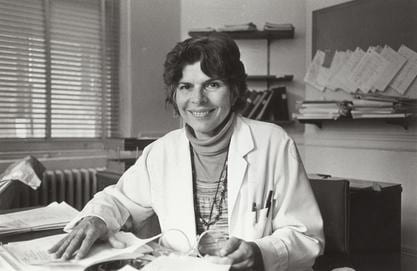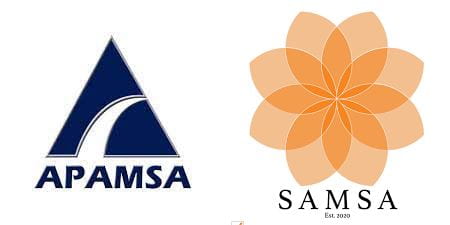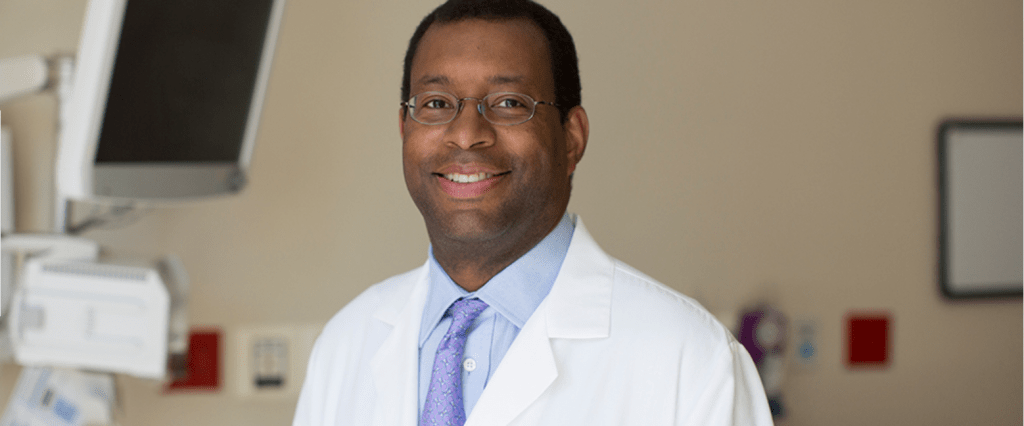In an effort to remain accountable to communities who have been negatively impacted by past and present medical injustices, the staff at Himmelfarb Library is committed to the work of maintaining an anti-discriminatory practice. We will uplift and highlight diverse stories throughout the year, and not shy away from difficult conversations necessary for health sciences education. To help fulfill this mission, today's blog post honors Dr. Helen Rodriguez Trias!

A pediatrician and women and children’s health advocate, Dr. Helen Rodriguez Trias deeply believed medical professionals must immerse themselves in the social issues impacting the communities they serve and wove this personal philosophy into her medical and advocacy work. Over the course of her career, she consistently spotlighted issues facing women and children, particularly those that were people of color, poor or disabled.
Dr. Helen Rodriguez Trias was born on July 7, 1929 in New York, though she spent the first few years of her life in Puerto Rico with her family. Upon her return to the United States, she faced racial discrimination while attending public school. Despite receiving good grades and her use of English, Dr. Rodriguez Trias was placed in special education classes. She remained in this setting until she recited a poem by heart and her teacher realized Rodriguez Trias was placed in the wrong class.
After completing high school, Dr. Rodriguez-Trias returned to Puerto Rico for college. During her time as a student, she became involved with the island’s independence movement and participated in a school-wide strike against the university’s chancellor, Jaime Rexach Benitez, who prevented the Puerto Rican Nationalist Party leader, Don Pedro Albizu Campos, from speaking on campus. Because of her involvement in the strike, Dr. Rodriguez-Trias was forced to return to New York City when her brother threatened to cut her off financially. She remained in the United States for several years before returning to the University of Puerto Rico, where she eventually graduated with a BA in 1957 and her medical degree in 1960.
Not long into her medical career, Dr. Rodriguez-Trias worked to address a major need within her immediate community. She established a newborn care clinic in the hospital and under her leadership, Puerto Rico experienced a 50% decrease in newborn mortality rates within the first 3 years of the clinic’s establishment. After completing her residency, she opened a pediatric practice in Puerto Rico and remained there until the 1970s.
At the time, Dr. Rodriguez-Trias was married, but divorced her husband before relocating to the United States. She often cited her divorce as a moment that deeply impacted her on a personal and professional level. "A watershed in my life was getting divorced in Puerto Rico....In my formation as a professional, there was always a kind of pressure to deny or not use a lot of your personal experience....But I was now discovering a whole other world out there through my personal experience of a deceptive marriage. That triggered quite a bit of growth in me toward understanding what happens internally to people, what happens in their lives and what they can do or not do...." (U.S. National Library of Medicine)
That experience would influence her for the rest of her career.
During the 1970s, Dr. Rodriguez Trias worked as the head of the pediatrics department at the Lincoln Hospital in the South Bronx. This was a diverse corner of New York with communities from all areas of the globe, including a large Puerto Rican population. During her tenure, Dr. Rodriguez Trias advocated for hospital employees to have a voice in administrative and patient-care issues. She frequently embedded herself in community conversations and encouraged the hospital medical professionals to engage with the community as well, so the medical staff had a better understanding of how outside issues impacted patients’ health.
Around this time, Dr. Rodriguez Trias also became heavily involved in the women’s movement and the women’s health movement, particularly on issues related to abortion access and the reproductive health abuse certain groups of women face. “While many women chose the [sterilization] procedure, health authorities pressured many other--especially working-class and poor women--to agree to it or falsely told them that it was reversible. Similar programs targeted poorer Black women and girls in the American South." ("Dr. Helen Rodriguez Trias") To combat these issues, Dr. Rodriguez Trias formed both the Committee to End Sterilization Abuse and the Committee for Abortion Rights and Against Sterilization Abuse. She testified before the Department of Health, Education and Welfare, advocating for the need for and eventually drafting federal guidelines for the reproductive procedure. The new guidelines featured three key components. First, doctors were required to explain the procedure in language that was accessible and easy to understand. Second, patients were required to submit written consent. Lastly, there was a mandatory wait period between the submission of consent and the medical procedure.
Dr. Rodriguez Trias would continue to speak up for women and children and their access to healthcare for the remainder of her career. On January 8, 2001, President Bill Clinton awarded Dr. Rodriguez Trias with the Presidential Citizen’s Award in recognition of her advocacy work for women and children impacted by the HIV/AIDS epidemic. And in 2019, New York City commissioned a statue of Dr. Rodriguez Trias that will be placed near the location where Lincoln Hospital once stood.
Dr. Helen Rodriguez Trias' life and career serve as examples for medical professionals who wish to impact their patients' lives outside of the hospital or private practice. She dedicated her time and energy to stand alongside the communities who needed equitable access to care and recognized that many outside factors impacted a person's level of health.
To learn more about Dr. Helen Rodriguez Trias, please explore Himmelfarb's catalogue which features articles written by the doctor. Or start with 'The Face of Women's Health: Helen Rodriguez-Trias' written by Joyce Wilcox for the American Journal of Public Health.
Bibliography:
- “Dr. Helen Rodriguez Trias.” National Park Service, www.nps.gov/people/dr-helen-rodr%C3%ADguez-tr%C3%ADas.htm. Accessed 20 Sept. 2021.
- “Hidden Gems at The Archives: Dr. Helen Rodriguez-Trias.” Centro: Center for Puerto Rican Studies, centropr.hunter.cuny.edu/centrovoices/chronicles/hidden-gems-archives-dr-helen-rodriguez-trias. Accessed 20 Sept. 2021.
- U.S. National Library of Medicine. “Dr. Helen Rodriguez-Trias.” Changing the Face of Medicine, cfmedicine.nlm.nih.gov/physicians/biography_273.html. Accessed 20 Sept. 2021.
- Wilcox, Joyce. “The Face of Women’s Health: Helen Rodriguez-Trias.” American Journal of Public Health, vol. 92, no. 4, 2002, pp. 566–69, doi:10.2105/ajph.92.4.566.









